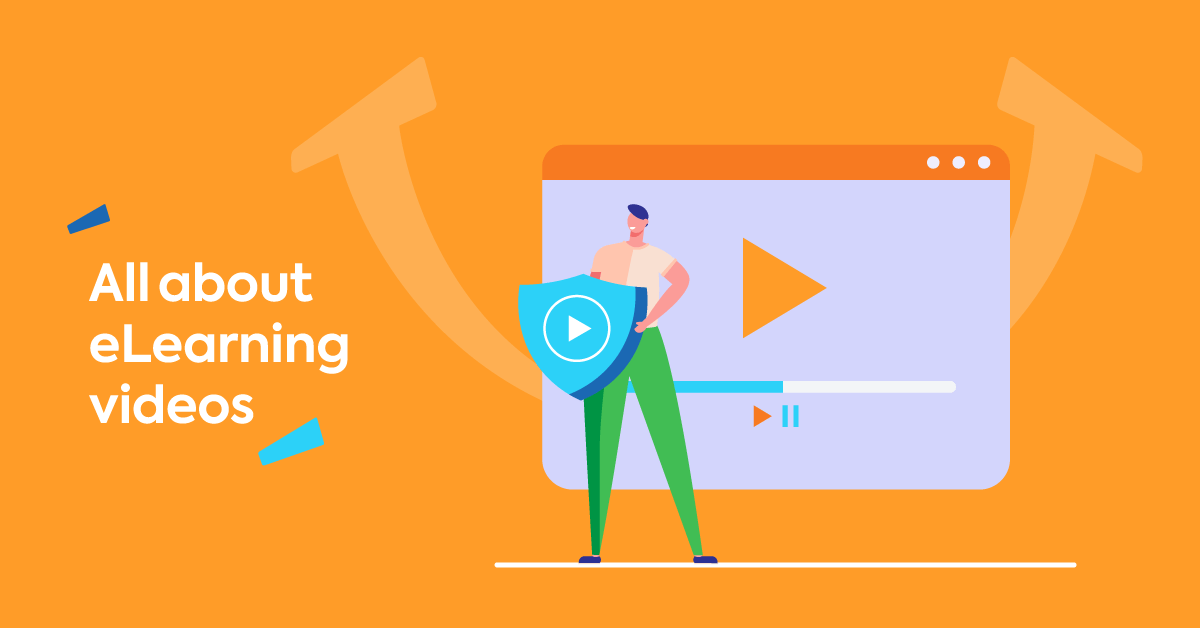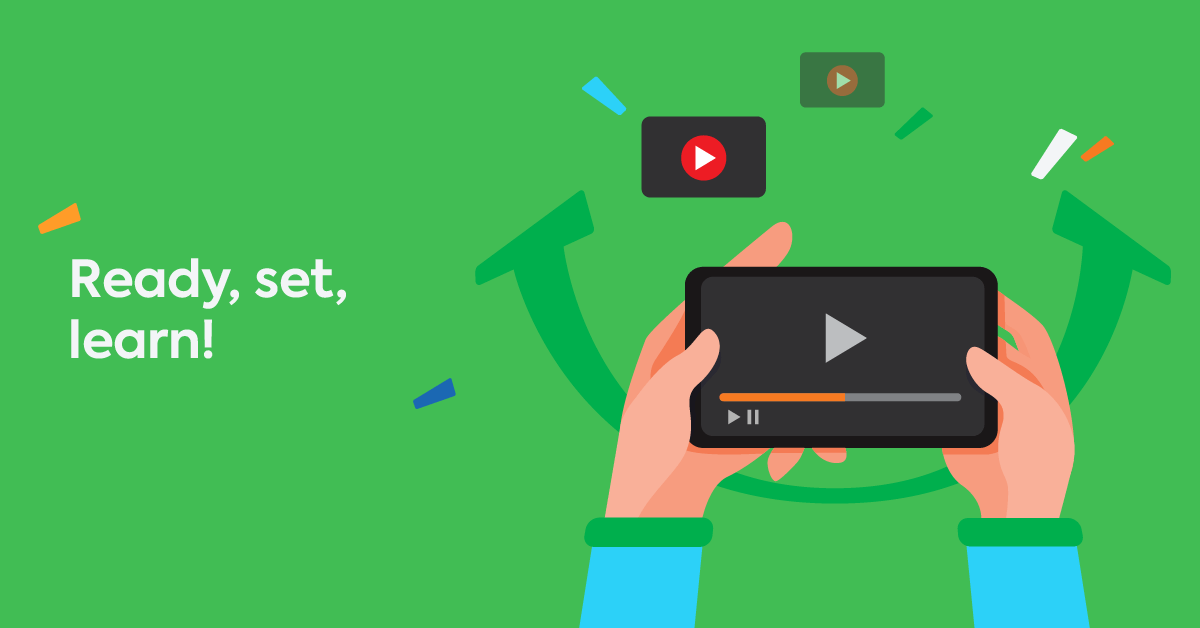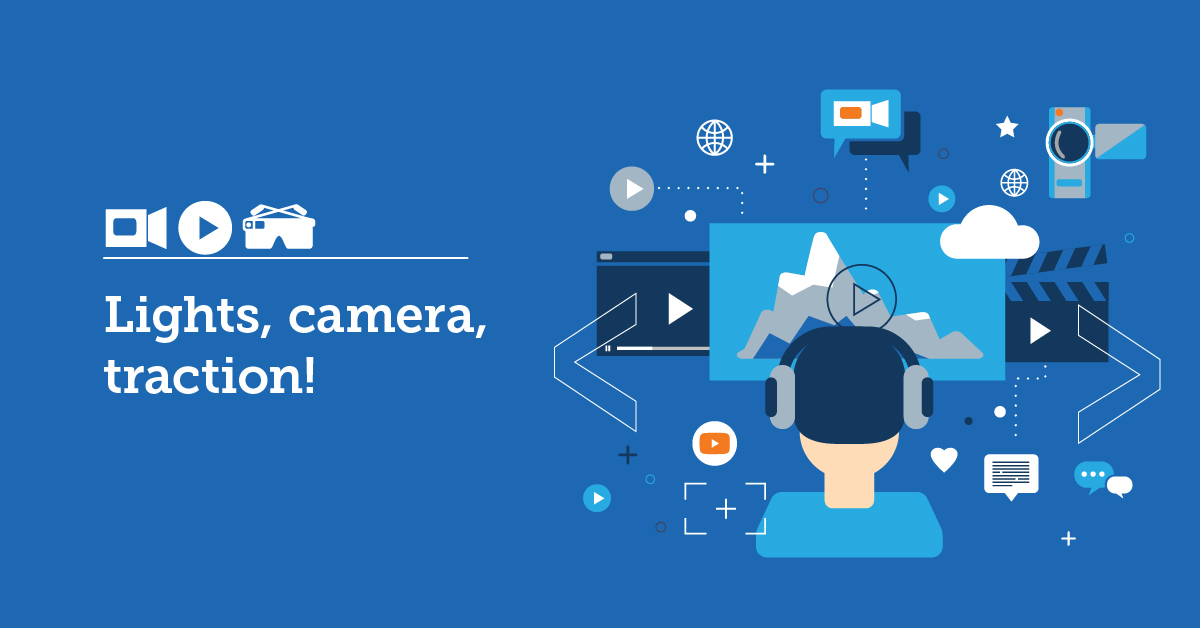Video is a fast-growing eLearning resource. It’s accessible, affordable and adaptable, and suits pretty much every size and type of business. But making eLearning videos a successful addition to your training package requires planning and support. Here’s where this guide comes in.
What we’ll cover:
- Benefits of eLearning videos
- Types of eLearning videos
- How to create an eLearning video
- Useful tools and resources
- eLearning video dos and don’ts
- Challenges and limitations
If you haven’t used video as part of your L&D offering before, starting from scratch can seem daunting. This guide gently steers you through the different stages — from why it’s important to what tools and resources you’ll need.
If you’re already on board with video eLearning, but keen to expand or enhance your offering, we’ve got tips to help move your employee training videos up a level.
And the results? Well, let’s just say the benefits far outweigh that initial legwork. Here’s why…
Why use videos in eLearning
First things first. Why invest money from your L&D budget producing eLearning videos? If you need to justify that spend, here are five key reasons why you should use videos in eLearning:
1. The go-to resource for learning (in and outside of work)
Did you know that there are more learning-related videos on YouTube than books in the Library of Congress? Whether it’s learning a new language or fixing a burst water pipe, videos are now the first port of call for people wanting to educate themselves. (86% of US viewers say their main reason for watching YouTube is to learn a new skill).
2. Keep people learning for longer
Get the content and format right, and videos are better at engaging learners and keeping them engaged for longer. In the hands of your instructional designer, the creative potential that video-based learning has can be exploited to maximum effect.
From interactivity and spot quizzes to animations and storytelling devices, the techniques it supports to entertain and engage outperform other learning tools.
3. Keep people remembering for longer
Remember the Ebbinghaus forgetting curve? No? Ok, here’s a reminder. In 1879, German psychologist Hermann Ebbinghaus discovered that people forget what they learned 20 minutes after they learned it (Finkenbinder, 1913).
Over a hundred years later, and we now have a tool to combat that — video. Research shows that video training helps learners retain information for up to a month.
4. Good to share
Around 1 million learning YouTube videos are shared every day. With video (unlike other learning tools), it’s easy to spread the love — and the learning. All it takes is a click and the eLearning video you’ve just produced gets both endorsement and exposure across your wider network.
5. Show not tell
With video content, “How to” learning comes into its own. Research indicates that when it comes to instructional learning, people respond better to visual guidance than written information — even if both formats have the same words and sequencing.
Looking for more reasons why videos could be a great training tool and worth the budget? In this guide, explore all the benefits of eLearning videos.
Different types of eLearning videos
People absorb information in different ways. A versatile medium, video can be tailored to meet the needs of a wide range of learning types. And adapted to meet the goals of different learning objectives.
When you create eLearning videos, the purpose of your video should determine the format. And whether it’s part of an employee engagement campaign or a customer-focused demonstration, there’s a format and technique to suit.
Storytelling videos
Stories help us process and retain information, making them an ideal eLearning training tool. They create an emotional connection with the material and present information in a softer format, with key learning objectives subtly and strategically enveloped in an ongoing narrative.
Embedding storytelling into your eLearning videos promotes a memorable learning experience, appealing to the type of learner who may not respond well to formal learning or who’s had a bad experience with it in the past.
Good for? If you’re working on an internal eLearning campaign or introducing customers to a new tool or product, a storytelling video is a great way to hook your learner in and create a buzz. Follow this up with carefully timed nuggets of content to keep momentum and interest alive.
Talking head videos
Using a talking head video helps with visual and social eLearning. It’s also easy to produce: all you need is an interviewee or a subject matter expert (SME) and a camera.
For many, learning by watching another human is easier than reading words on a screen or listening to a voice-over. And because of its pared-down aesthetics, it’s easier to focus on what is being said.
Good for? This format is perfect for microlearning (delivering short, digestible snippets of information). It’s also effective as part of onboarding training, especially with remote teams. Your new employees need to feel connected to the team. Having the CEO and a few team members record short videos about the company mission and culture is the first step in building strong relationships.
Voice-over videos
A versatile, familiar, and effective approach to video eLearning, a voice-over video is where someone we don’t see provides a narrative to the visuals (PowerPoint or Keynote slides, for example).
Using image and sound to convey information, voice-over videos engage both visual and auditory learners. Add captions and you’ve catered to all the most common learning types.
Good for? This format lends itself to team presentations or as an introduction to your company values during onboarding training. It also works well as a screencast video during IT training or sales training to show learners how to use a particular product or tool.
Animated videos
Essentially grown-up cartoons, animated instructional videos convey learning in a fun, friendly, and engaging way. A familiar, overarching format, they’re effective at reaching different types (and generations) of learners.
Good for? They may feel light and informal, but animated videos lend themselves to difficult, often hard-to-address content. Use them to ease learners gently into topics that can be abstract, contain complex terms or relate to specific issues within the workplace. Transcending language barriers, they’re also a great learning leveler, ideal for global or dispersed teams.
If you’re looking to add animated videos to your training programs, ready-made videos could be a cost- and time-effective solution. Online collections, like TalentLibrary™, offer a wide range of video courses with animated characters and engaging storylines, so you don’t have to create everything from scratch.
Meet TalentLibrary™
A growing collection of ready-made courses that cover the soft skills
your teams need for success at work![]()

Instructor-led videos, demos, and simulations
eLearning videos which show something being enacted (a live demo or a pre-recorded simulation, for example) can be more effective than training experienced first-hand.
The playback functionality that comes with video and the ability to show different camera angles are features that provide a richer and more reinforced learning experience.
Good for? This format suits product demos, the acquisition of procedural knowledge, and ongoing, technically-focused eLearning programs.
Learner-generated videos
Promoting a knowledge-sharing culture, learner-generated video content empowers subject matter experts or employees within an organization to become informal trainers.
A form of social learning, its unplanned approach can be just as impactful as more structured training because it comes with the credibility of first-hand experience and knowledge.
Good for? Helping employees learn from each other is a great way of influencing behaviors and building a culture of positivity, empowerment, and engagement within your organization’s L&D world.
How to create a successful eLearning video
Producing your own video-based learning program demands commitment and focus. Our 10-step guide will keep you on track so you can create eLearning videos that deliver results:
- Step 1. Define your target audience and key objective – this should underpin everything you do, pre and post-production.
- Step 2. Match your target audience to the right video eLearning format – nail this and you’ll improve engagement and retention rates.
- Step 3. Consider your content – is it a simple, talking head video (cue your SME interviewee) or an animated video combined with slides, a quiz, and a voice over?
- Step 4. Script and storyboard – plan your visual and audio content and stick to it.
- Step 5. Produce a filming schedule – who do you need to make this a reality and when do you need them?
- Step 6. And… shoot! On the day of filming make sure you’ve got all the technical tools you need (mics, cameras, and props) and the right technical support (directors, runners, sound, and lighting bods).
- Step 7. Make time for post-production – when you’re pulling everything together refer back to your audience and objective at every stage.
- Step 8. Check accessibility — can everyone in your target audience access the content of your video?
- Step 9. Go public – whether it’s an onboarding video for a new hire or phase one of an ongoing learning campaign, time the release to ensure maximum impact and engagement.
- Step 10. Evaluate success — record feedback, track use where you can, and feed insights back into your next project.
Tools and resources to make a great eLearning video
To produce successful eLearning videos you don’t need a vast technical toolkit at your disposal. You just need to look into different options and pick the best video software based on your needs and resources. In fact, keeping it simple can often be the best format, irrespective of budget. But it does need to look professional.
So, what tools and resources do you need to achieve a professional result? Here’s our lowdown.
Low-budget lifelines
In its purest form, all you need to make a great eLearning video is access to a laptop or smartphone with a camera, a good microphone, and an in-app recording system. Upload to YouTube or Vimeo and share with your team. Job done.
If you’ve got PowerPoint or Keynote, add audio to a set of slides and then save it as a movie. Easy.
For “How to” guides, product or technical training, screencasting (recording what’s on your computer screen with a voiceover overlaid) is effective and affordable. There are lots of free tools on the market — look for one that allows you to edit so you can package your content up into digestible sections.
And remember. If you’re using an LMS, your options are even wider and more affordable. You can integrate your videoconferencing tools, create original videos, and upload your own recordings to create complete courses.
Pro tip: Explore the creative potential of YouTube
If you’re on a limited budget, don’t underestimate the creative potential of YouTube to expand and enrich your video-based learning. Whether you’re producing your own videos or curating online training content, YouTube can help boost visual engagement, interactivity, and social learning.
Add videos to your courses quickly with TalentLMS
And integrate your favorite videoconferencing tools.
Easy to set up, easy to use, easy to customize.
The blockbuster approach
If you’ve got a bigger budget and want a high-end feel, owning your own professional production equipment is a good investment. Depending on the type of videos you plan to produce, your toolkit should include some or all of the following:
- A good DSLR camera, tripod, and external microphone
- Some form of lighting kit (a reflector is a good starting point)
- Editing or post-production software (iMovie is free and effective)
- Video editing hardware (you’ll need this if the existing editing functionality on your device starts to slow you down)
- Access to a transcription service (this supports accessibility, ensuring that people with hearing difficulties have no barriers to entry)
- A 64GB plus, good quality memory card which supports long shoots and lots of footage
And, of course, you’ll need skilled (or properly trained) technicians to bring your equipment, vision, and learning intention to life.
eLearning video dos and don’ts
There are lots to remember when producing video-based learning. Here’s a checklist of what works and what doesn’t.
Is an eLearning video always the best option?
We’ve talked about how powerful videos can be in engaging learners, but the medium’s not without its limitations and challenges. Producing training videos is a big (and potentially costly) commitment. So, it’s important to be aware of these from the beginning. Here’s what to look for:
Out of office
If you have lots of deskless workers, your eLearning video package should be designed with this in mind. Make sure your videos are optimized for mobile streaming and designed for learning on the go.
Use engaging, bite-sized chunks of content to ward off the distractions that come with being in an out-of-office environment.
Time to talk
Recorded sessions are a powerful learning tool, but they don’t allow for interaction between instructor and learners. Combine them with a live Q&A session so your audience benefits from both.
Added weight
Corporate networks are often built to prioritize transactional systems and can struggle to cope with the extra pressure placed on bandwidth by weighty video content. Talk through your requirements with your tech experts and test out capacity first.
Hard to hear
Consider the environment your learners will be in when they view your video. Sound travels and can be a distraction to colleagues and customers — particularly in an open office environment or out on the road.
Provide headphones. And, where practical, breakaway rooms for your employees to use.

To video or not to video
Videos are a powerful eLearning tool and can work for any size and type of business. But they should always be designed as a means to an end and not simply a box to tick in your eLearning toolkit.
Remember to always start with your learners and learning objectives in mind, sync this up with the appropriate format, and design content to suit.
| Tags: eLearning Videos



